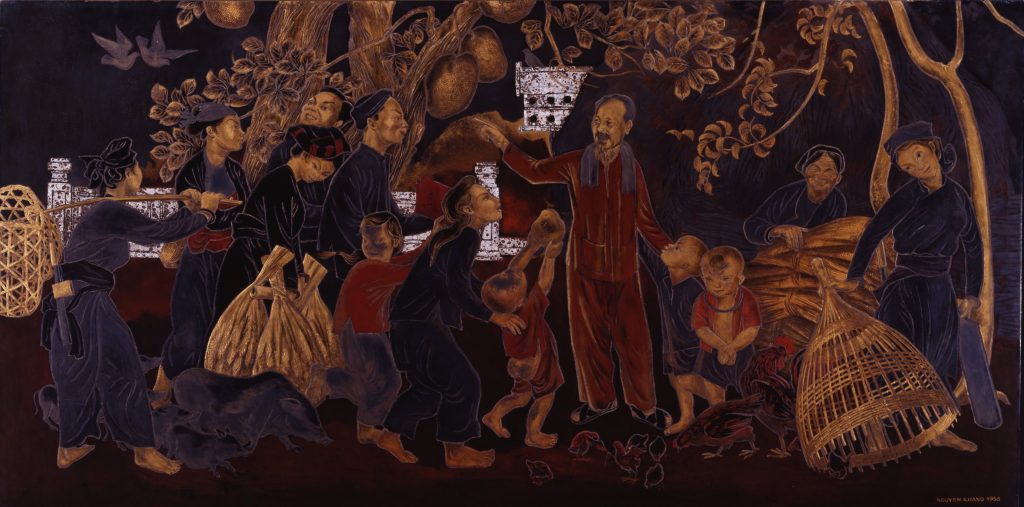
Uncle Ho Visiting the Village
In the Ecole des Beaux-Arts de l'Indocine, founded in 1925, silk painting and lacquer painting were taught alongside oil painting. All of the three categories evolved into independent genres in Vietnamese modern art. Nguyen Khang, one of the sixth batch students of the school, played a significant role in the development of lacquer painting. This work depicts a village visit by Ho Chi Minh, the founding father of Vietnam. With a towel wrapped around his neck, Ho Chi Minh is surrounded by villagers of all ages, who gathered around to greet him. Even animals joined in. To place a politician among children to stress the fatherly nature and to symbolize the power of the figure was a common practice in art, for instance, in the propaganda art of China. However, the portrayal of Ho Chi Minh here was not the idealized type normally found in the works of this kind. Dressed in ordinary clothes like the rest of the villagers, the character of a hero who was admired and nicknamed 'Uncle Ho' was well represented here. This work was made in 1958 when the country was blessed with a brief period of peace between two wars. The gold color unique to lacquer painting seems to indicate the transient nature of happiness. (YY)
Work description
| Title | Uncle Ho Visiting the Village |
|---|---|
| Name of the Artist | Nguyen Khang |
| Year | 1958 |
| Medium | lacquer on board |
| Size | 92.0×190.0 cm |

